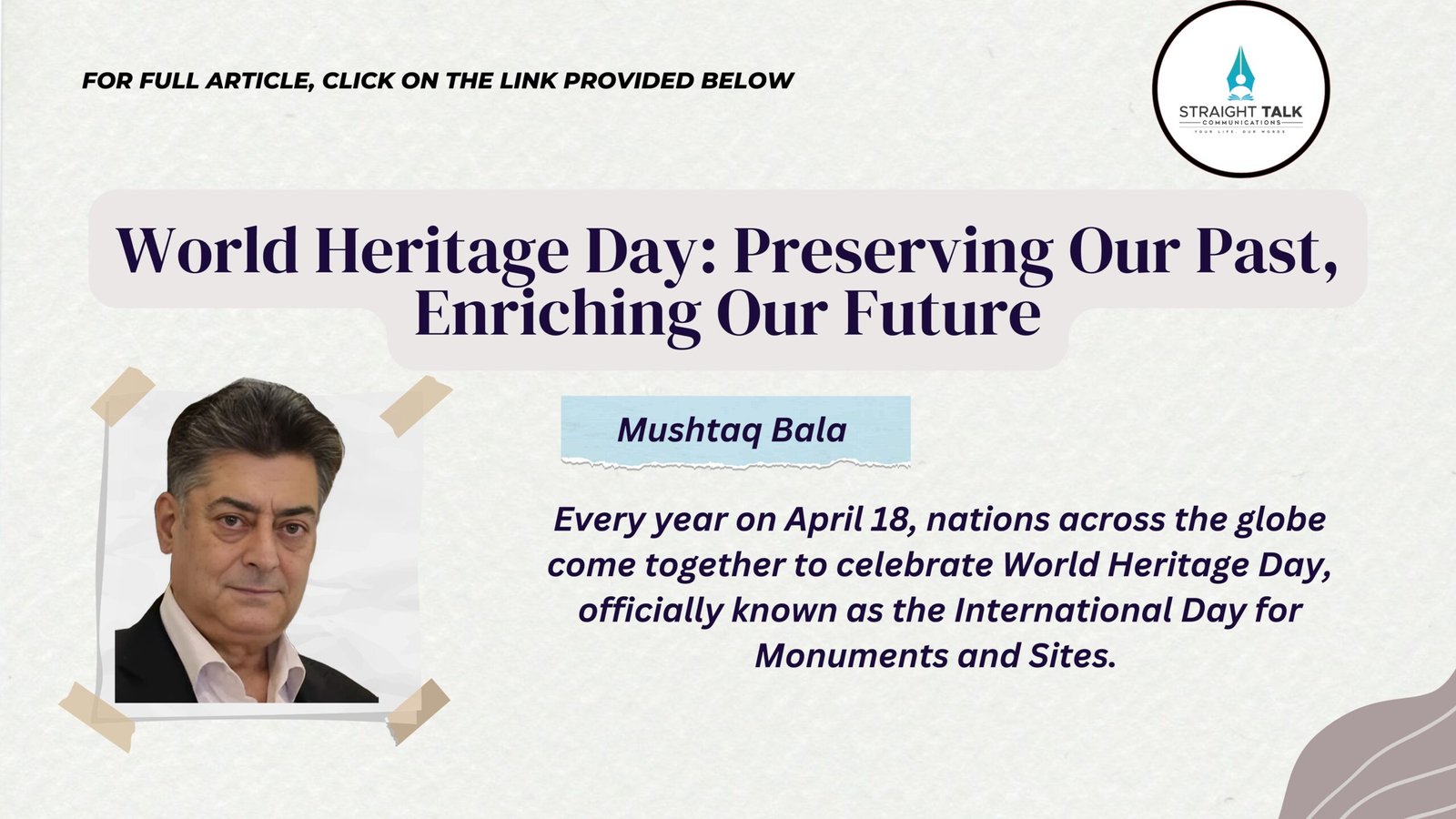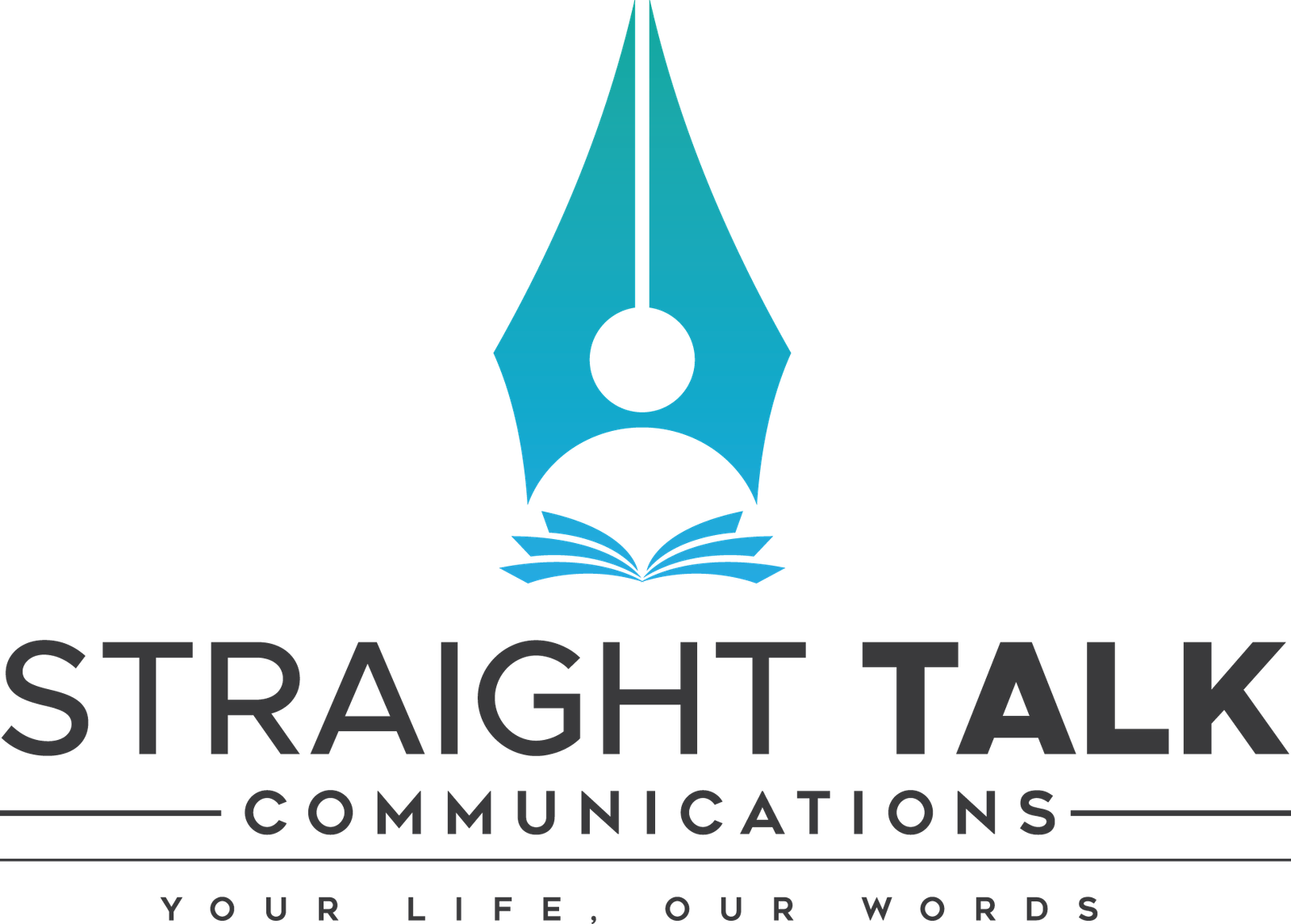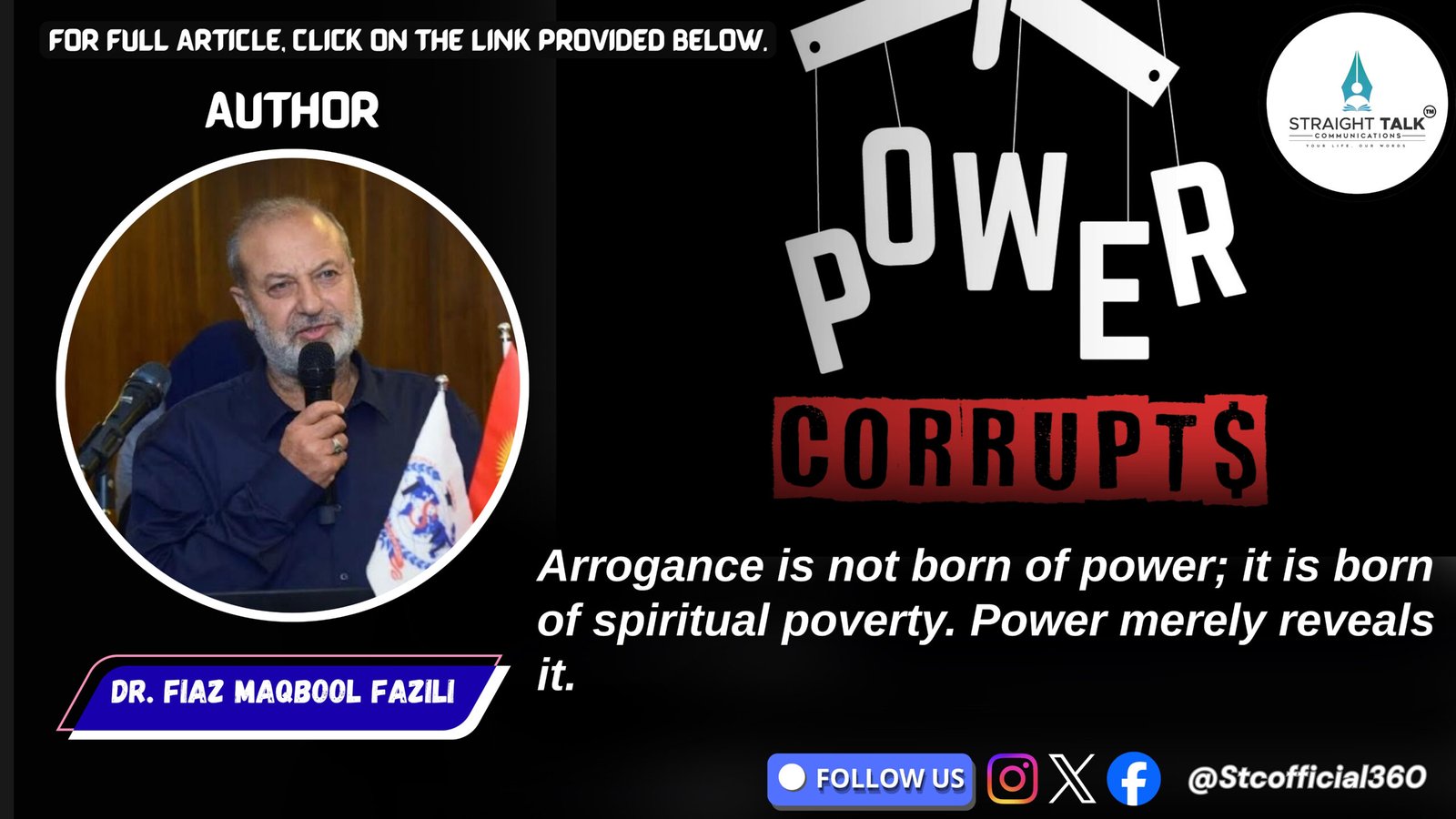World Heritage Day: Preserving Our Past, Enriching Our Future

Mushtaq Bala
Every year on April 18, nations across the globe come together to celebrate World Heritage Day, officially known as the International Day for Monuments and Sites. Instituted by the International Council on Monuments and Sites (ICOMOS) in 1982 and later endorsed by UNESCO, the day serves as a poignant reminder of the importance of preserving our cultural and natural legacies. These are not just relics of the past but vital threads in the fabric of our identity, history, and collective memory.
This year, as we mark the occasion, we are reminded that heritage is not merely about ancient structures or archaeological remains—it is also about intangible practices, oral traditions, languages, and ways of life passed down through generations. The theme for this year, [insert theme if available], emphasizes the role of community-led conservation and the need for inclusive, sustainable stewardship of our historical and cultural assets.
Kashmir: A Living Museum of Heritage
Nowhere is this more evident than in the culturally rich and historically vibrant region of Kashmir. Known the world over for its breathtaking landscapes, Kashmir is equally a repository of deep spiritual, architectural, and artistic heritage. From the 13th-century Khanqah-e-Moula, the ancient Martand Sun Temple, and the awe-inspiring Jamia Masjid of Srinagar, to the elegant woodwork of old downtown homes and the mystical resonance of Sufi shrines—every corner of Kashmir tells a story.
Kashmir’s intangible heritage is equally profound. The Kashmiri language, the Sufi-Rishi tradition, Pheran-clad storytelling elders, the practice of paper maché art, Namda weaving, and the traditional Wazwaan cuisine form the soul of its culture. These aren’t just practices of the past; they are living, breathing aspects of daily life that define the identity of Kashmiris.
Heritage Under Threat:
However, heritage is fragile. Political unrest, urbanization, climate change, and lack of awareness have posed serious threats to many of these invaluable assets. Historic buildings are deteriorating due to neglect or insensitive renovations. Oral traditions and languages are slowly vanishing with the passing generations. The aggressive pace of modern development often sidelines heritage preservation, reducing centuries of legacy to footnotes in development plans.
It is imperative that institutions, governments, and citizens work collaboratively to reverse this trend. Restoration projects, digital documentation, community-based cultural initiatives, and heritage education in schools can serve as pivotal strategies in preserving the collective identity of a region.
The Role of Media and Cultural Advocates:
Publications have a critical role to play in this endeavor. By highlighting stories of heritage, showcasing the work of local historians, artists, and conservators, and giving space to marginalized voices and forgotten traditions, the media can act as a powerful bridge between the past and the future.
As we commemorate World Heritage Day, we invite our readers to reflect on the heritage that surrounds them—not just in stone and script, but in the lullabies of a grandmother, the woodwork of an old doorway, the aroma of a traditional dish, or the rhythm of a forgotten poem. Every act of remembering, preserving, and celebrating heritage is a step toward cultural continuity and resilience.
Let us not relegate our heritage to museums and memory alone. Let us live it, share it, and pass it on.
(The author is a renowned filmmaker and Editor of weekly ‘Kashmir Pen’)







